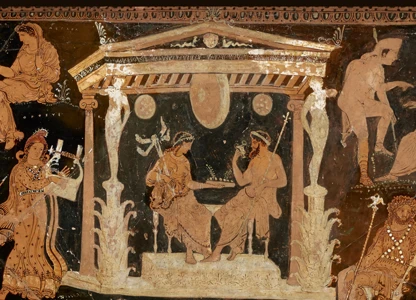The realm of the afterlife has long captivated the human imagination, and in Roman mythology, the concept of the afterlife holds a prominent place. Rich in symbolism and belief, the Romans’ understanding of what lies beyond the mortal realm is a fascinating subject. In this article, we will delve into the depths of Roman mythology to explore their beliefs about the afterlife. Discover the dualistic view of the afterlife, influenced by Greek mythology, as well as the ruler and realm of the underworld. Uncover the major figures that inhabit this realm, including the legendary Charon, the fearsome Cerberus, and the enigmatic Fates. Learn about the punishments and rewards that await souls in Tartarus and Elysium, and examine the customs surrounding funerary rites and the soul’s journey to the underworld. Finally, we will compare the Roman afterlife beliefs with those of other mythological traditions. Prepare to embark on a journey into the realms of the divine and the mysteries of the afterlife in Roman mythology.
Contents
- Beliefs about the Afterlife
- The Underworld: Ruler and Realm
- Major Figures in the Underworld
- Punishment and Rewards
- Funerary Rites and Soul’s Journey
- Comparisons with Other Afterlife Beliefs
- Conclusion
-
Frequently Asked Questions
- 1. What is the significance of the dualistic view of the afterlife in Roman mythology?
- 2. How did Greek mythology influence Roman beliefs about the afterlife?
- 3. Who is Pluto in Roman mythology?
- 4. What is the role of Charon in the afterlife?
- 5. Who is Cerberus and what is its purpose?
- 6. What are the Fates in Roman mythology?
- 7. What is Tartarus in Roman mythology?
- 8. What is Elysium in Roman mythology?
- 9. What are the funerary rites associated with the Roman afterlife?
- 10. How do Roman afterlife beliefs compare with other mythological traditions?
- References
-
Frequently Asked Questions
- 1. What did the ancient Romans believe happened to the soul after death?
- 2. How did the Romans view the afterlife compared to other ancient civilizations?
- 3. Who ruled the Underworld in Roman mythology?
- 4. What was the role of Charon in the Underworld?
- 5. Who was Cerberus and what was his role in the Underworld?
- 6. What were the punishment and rewards in the Underworld?
- 7. What were the funerary rites and customs in ancient Rome?
- 8. How did the soul make its journey to the Underworld?
- 9. How does Roman mythology compare to Egyptian mythology in terms of the afterlife?
- 10. What are the similarities and differences between Roman and Norse mythology regarding the afterlife?
- References
- Read More
Beliefs about the Afterlife
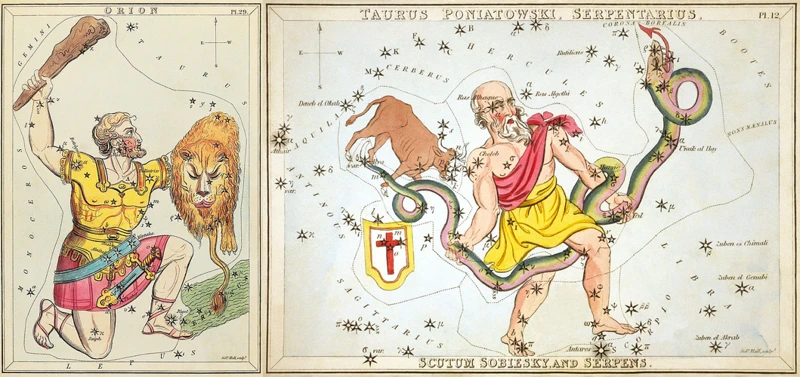
Roman mythology presents a fascinating perspective on the afterlife, with a dualistic view that influenced their beliefs. The Romans believed that upon death, a person’s soul would embark on a journey to the realm of the afterlife. There were two main destinations awaiting souls: Tartarus, the deepest abyss where the wicked were punished, and Elysium, the blissful fields reserved for the virtuous. The concept of the afterlife in Roman mythology bears resemblance to the Greek beliefs, reflecting the influence of Greek mythology on Roman culture. The Romans also believed in the existence of the Underworld, a realm that housed the souls of the departed. This realm was under the rule of Pluto, also known as Hades, who governed over the souls and the entire domain of the dead. The Roman afterlife beliefs were both complex and captivating, shedding light on their understanding of life and death. The realm of the afterlife holds a vast array of mysteries and wonders, just like the cosmic web connecting the universe.
1.1 The Dualistic View of Afterlife
The dualistic view of the afterlife was a significant aspect of Roman mythology. According to this belief, the Roman afterlife was divided into two distinct realms: Tartarus and Elysium. Tartarus, often associated with the Greek concept of Hades, was a place of punishment reserved for the wicked and unrepentant souls. It was depicted as a deep abyss, where souls endured various forms of torment and suffering based on their earthly actions. On the other hand, Elysium offered a contrasting vision of the afterlife. This realm was reserved for the virtuous and righteous individuals who lived noble lives. In Elysium, the souls experienced eternal bliss and happiness, residing in a peaceful and idyllic environment. The dualistic view of the afterlife in Roman mythology emphasized the stark contrast between good and evil, reward and punishment. It reflected the belief in a cosmic balance of justice, where each soul would face consequences for their earthly deeds. This intricate understanding of the afterlife in Roman mythology provides a glimpse into the complex moral and ethical values upheld by the ancient Romans. The dualistic nature of the afterlife in Roman mythology resonates with the exploration of compatibility between zodiac signs, such as Decoding Aquarius and Aries Compatibility, revealing intricate connections between individuals and their destinies.
1.2 The Influence of Greek Mythology
The influence of Greek mythology on Roman beliefs about the afterlife was significant and profound. The Romans were deeply influenced by the mythology and religious practices of the Greeks, and this influence extended to their understanding of the afterlife. Many of the gods and concepts associated with the afterlife in Roman mythology were directly borrowed from Greek mythology. For instance, the ruler of the Underworld in Roman mythology, Pluto, was essentially the Roman counterpart of the Greek god Hades.
Greek mythology described Hades as a fearsome deity who presided over the realm of the dead. His role in Greek mythology involved judging the souls of the deceased and assigning them to their appropriate place in the afterlife. The Romans adopted this concept and incorporated it into their own beliefs about the afterlife.
Another significant influence of Greek mythology on Roman afterlife beliefs was the idea of a dualistic view of the afterlife. In Greek mythology, the afterlife was divided into realms of punishment and reward, with Tartarus being the place of punishment for the wicked and Elysium being the place of reward for the virtuous. This concept of a divided afterlife was adopted by the Romans and became an integral part of their understanding of the afterlife.
The influence of Greek mythology on Roman beliefs about the afterlife can also be seen in the various mythical creatures associated with the Underworld. For example, the three-headed dog guardian of the Underworld, Cerberus, was originally a Greek mythological creature. The Romans incorporated Cerberus into their own mythology, portraying it as a fierce guardian at the gates of the Underworld.
The influence of Greek mythology on Roman afterlife beliefs is undeniable. It shaped their understanding of the afterlife, the gods associated with it, and the various realms and creatures within it. The blending of Greek and Roman beliefs created a rich and multi-dimensional view of the afterlife in Roman mythology. Just as planetary alignments play a role in space exploration, the influence of Greek mythology played a pivotal role in shaping the Roman understanding of the afterlife.
The Underworld: Ruler and Realm
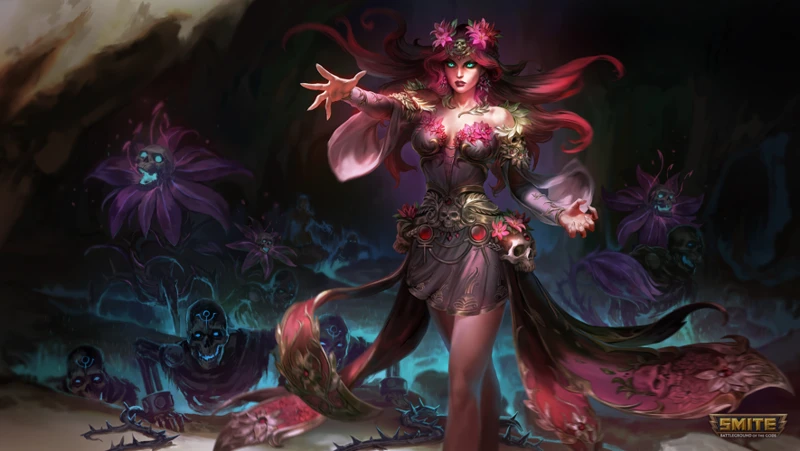
Within Roman mythology, the Underworld serves as the haunting realm that houses the souls of the departed. This immersive and enigmatic realm is presided over by Pluto, often equated with Hades in Greek mythology. As the ruler of the Underworld, Pluto possesses the power to govern and oversee the souls and activities of this otherworldly domain. The realm itself is a mysterious and eerie place, with its own unique geography and inhabitants. It is a realm concealed beneath the surface of the earth, a subterranean landscape where darkness reigns. The Underworld is a realm shrouded in shadows and secrets, captivating the imagination with its profound connection to the afterlife and the mysterious forces that govern it. Exploring the realm of the Underworld is akin to unraveling the cosmic mysteries that lie beyond our own mortal existence. Just as black holes intertwine with the cosmic web, the Underworld intertwines with the fabric of Roman mythology, holding great significance in their understanding of the afterlife.
2.1 The Realm of the Dead
The realm of the dead in Roman mythology, known as the Underworld or “Inferi,” is a mysterious and complex place. It is believed to be located beneath the earth’s surface, just beyond the reach of the living. This subterranean realm is depicted as a vast network of interconnected realms and domains, each serving a different purpose. One of the main areas within the Underworld is known as the Fields of Asphodel, where the souls of ordinary individuals reside after death. This realm is neither a place of punishment nor reward but rather a neutral space where souls go to exist in a state of limbo. Another area within the realm of the dead is called the Stygian Marsh, a swampy and foreboding place of great significance. It is here that the river Styx flows, a river that the souls must cross upon their arrival in the Underworld. The realm of the dead also includes regions such as the Mourning Fields, where unrequited lovers mourn for eternity, and the Elysian Fields, a paradise reserved for the virtuous and heroic souls. The complex and interconnected nature of the Underworld in Roman mythology adds depth and complexity to their beliefs about the afterlife, painting a vivid picture of what awaits souls beyond the mortal realm.
2.2 The Ruler: Pluto and Hades
Pluto and Hades, synonymous in Roman and Greek mythology respectively, governed the realm of the dead as the rulers of the Underworld. Known as the god of wealth, Pluto was not only associated with the afterlife, but also with the abundance and riches found within the earth. He was seen as a stern and implacable deity, embodying the duality of life and death. The role of Pluto and Hades in the afterlife was multifaceted and multifarious. With his legendary helmet of invisibility, Pluto maintained order and control over the souls of the departed. He was responsible for judging and assigning punishments to the guilty souls who entered the depths of Tartarus. At the same time, he also ensured that the virtuous souls found their eternal resting place in the blissful fields of Elysium. The perception of Pluto and Hades exemplified the Romans’ understanding of the afterlife, where a balance between punishment and reward was carefully maintained. While Pluto and Hades may evoke a sense of fear and darkness, they play an essential role in the complex tapestry of Roman mythology. Their power and influence extend beyond the mortal world, shaping the destiny of souls in the realm of the dead.
Major Figures in the Underworld
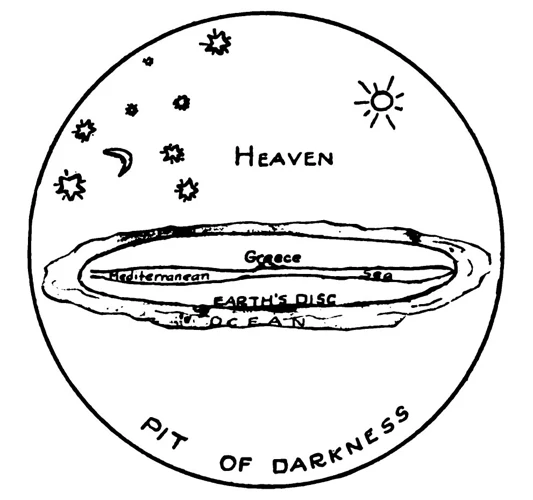
The mysterious and intriguing realm of the Underworld in Roman mythology is home to several major figures that play significant roles in the afterlife. One of the most prominent figures is Charon, the ferryman of the River Styx. Charon is responsible for transporting the souls of the deceased across the river to the realm of the dead. Another notable figure is Cerberus, the three-headed guardian of the Underworld. This fearsome creature ensures that souls cannot escape and prevents the living from entering. The Fates, also known as the Moirai, are another vital presence in the Underworld. These three sisters, Clotho, Lachesis, and Atropos, weave the threads of destiny and determine the fate of every mortal. They are the spinners of destiny, deciding the course and length of each person’s life. These major figures in the Underworld add depth and complexity to the Roman afterlife mythology, captivating the imagination with their roles and significance.
3.1 Charon: The Ferryman
In the realm of the Underworld, one of the most prominent figures is Charon, known as the Ferryman. Charon plays a crucial role in transporting the souls of the deceased across the river Styx, which separates the world of the living from the realm of the dead. Legend has it that Charon demands payment to ferry each soul across the river, usually in the form of a coin placed in the mouth of the deceased. This coin, known as an obol, ensures safe passage to the afterlife. Those who couldn’t afford to pay Charon were condemned to wander the shores of the Styx as restless spirits. Described as a grim and brooding figure, Charon is often portrayed as an elderly man with a long, unkempt beard, wearing tattered clothing. His boat, a small, shadowy vessel, is said to glide silently across the dark waters of the Styx. The role of Charon in Roman mythology serves as a reminder of the importance placed on proper burial customs and rituals to ensure a peaceful transition to the afterlife. In understanding the role of the Ferryman, one gains insight into the complex beliefs surrounding death and the journey of the soul in Roman mythology.
3.2 Cerberus: The Three-Headed Guardian
Cerberus, the fearsome three-headed guardian, holds a prominent place in Roman mythology as a figure deeply associated with the realm of the afterlife. According to legend, Cerberus was a monstrous dog with multiple heads and a serpent for a tail. His role was to guard the entrance to the Underworld, allowing souls to enter but never to escape. The heads of Cerberus were said to symbolize various aspects of the afterlife, with one head representing the past, one the present, and one the future. It is believed that the sight of Cerberus was enough to strike fear into the hearts of any mortal or deity attempting to trespass into the realm of the dead. The presence of Cerberus served as a formidable deterrent, ensuring the integrity and security of the Underworld. The legend of Cerberus highlights the importance of maintaining balance and order in the afterlife, and the belief that crossing into the realm of the dead was a one-way journey. The image of Cerberus as a powerful guardian continues to capture the imagination, reminding us of the intricate mythology woven into the fabric of Roman afterlife beliefs. Just as Cerberus guarded the gates of the Underworld, so too does the cosmic web enshroud the mysteries of the universe, standing as a guardian of hidden knowledge.
3.3 The Fates: Spinners of Destiny
The Fates, known as the Parcae in Roman mythology, were a trio of deities who held immense power over the destiny of mortals. Comprised of three sisters, Clotho, Lachesis, and Atropos, the Fates were often represented as elderly women, constantly spinning, measuring, and cutting the thread of life. Each sister had a distinct role in determining the fate of individuals. Clotho, the spinner, would spin the thread of life, symbolizing the beginning of a person’s existence. Lachesis, the measurer, would determine the length of the thread, representing the duration of a person’s life. Finally, Atropos, the cutter, would decide when to sever the thread, signifying the end of a person’s life. The Fates were believed to be impartial and inexorable, carrying out their duties without interference. They were considered forces of nature, shaping the destinies of mortals and even the gods themselves. The Fates’ role in the afterlife was crucial, as they determined the eternal destiny of each soul. They were present during the judgment of souls, guiding them to their rightful place in either Tartarus or Elysium. The Fates embodied the power and mystery surrounding the afterlife, weaving the intricate tapestry of destiny for both the living and the dead.
Punishment and Rewards
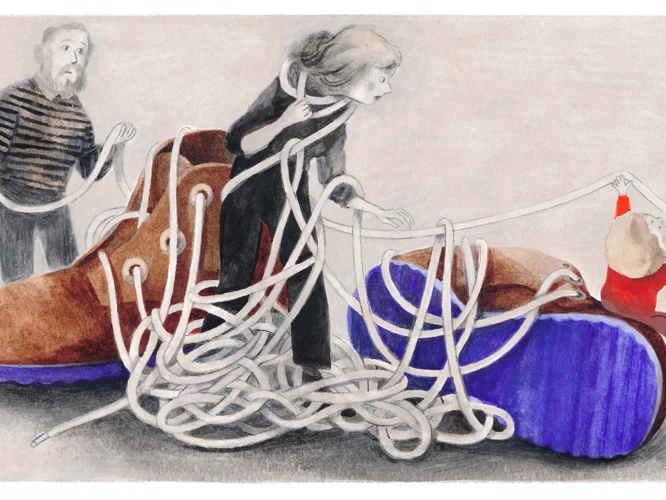
In Roman mythology, the afterlife was not merely a realm of existence but also a realm of justice. Souls that departed this world were subjected to either punishment or reward in the afterlife, depending on their deeds in life. The wicked were condemned to Tartarus, the deepest abyss of the underworld, where they faced eternal torment and suffering. Tartarus served as a prison for the likes of criminals, traitors, and other individuals who committed grave sins. Conversely, those who lived virtuous lives were rewarded with a place in Elysium, the blissful fields of the afterlife. Elysium offered a paradise-like existence, where the souls of the righteous could find eternal peace and happiness. This notion of punishment and rewards in the afterlife reflects the Romans’ belief in the importance of leading a moral and righteous life. It served as a reminder to individuals to strive for virtuous actions and avoid the path of wrongdoing. The concept of divine justice in the afterlife underscored the significance of morality in Roman society.
4.1 Tartarus: The Deepest Abyss
Tartarus, known as the deepest abyss in Roman mythology, was a place reserved for the punishment of the most wicked souls. It was a dark and foreboding realm, located deep within the bowels of the earth. Souls who found themselves condemned to Tartarus would endure unimaginable torment and suffering for their transgressions. The punishments in Tartarus were tailored to fit the specific crimes committed by the souls. Some were condemned to eternal thirst or hunger, while others faced endless torture and torment at the hands of demonic creatures lurking in the shadows. It was believed that Tartarus was guarded by fierce creatures such as the monstrous Fury, whose eerie presence struck fear into the hearts of those who dared to venture near. The depths of Tartarus served as a stark reminder of the consequences that awaited those who strayed from the path of righteousness. It was a place where even the mightiest of souls were humbled and brought to their knees, forever trapped in their own personal hellish prison. The imagery associated with Tartarus reflects the Romans’ stern moral code and belief in justice, highlighting the consequences that awaited those who succumbed to darkness and evil. Exploring the depths of Tartarus is akin to delving into the mysteries of human morality and the consequences of our actions, a journey that evokes a sense of both fascination and trepidation.
4.2 Elysium: The Blissful Fields
Elysium, also known as the Blissful Fields, was the realm in the afterlife where the virtuous and heroic souls found solace and eternal happiness. In Roman mythology, Elysium was described as a paradisiacal setting, a place of radiant beauty and abundance. The souls residing in Elysium enjoyed a blissful existence, free from suffering and pain. This idyllic realm was characterized by lush meadows, serene rivers, and magnificent gardens blooming with vibrant flowers. It was believed that in Elysium, the souls would partake in activities such as feasting, music, and dancing, indulging in the delights of life even in the afterlife. The inhabitants of Elysium were believed to be the heroes and those who had lived exemplary lives, such as great leaders, poets, and philosophers. These souls were rewarded for their virtuous deeds and granted eternal peace in the enchanting realm of Elysium. The concept of Elysium in Roman mythology mirrored the Greek notion of the Elysian Fields, emphasizing the importance of leading a moral and honorable life. In the intricate tapestry of the Roman afterlife, Elysium stood out as a beacon of hope and reward for those who had lived with virtue and integrity.
Funerary Rites and Soul’s Journey
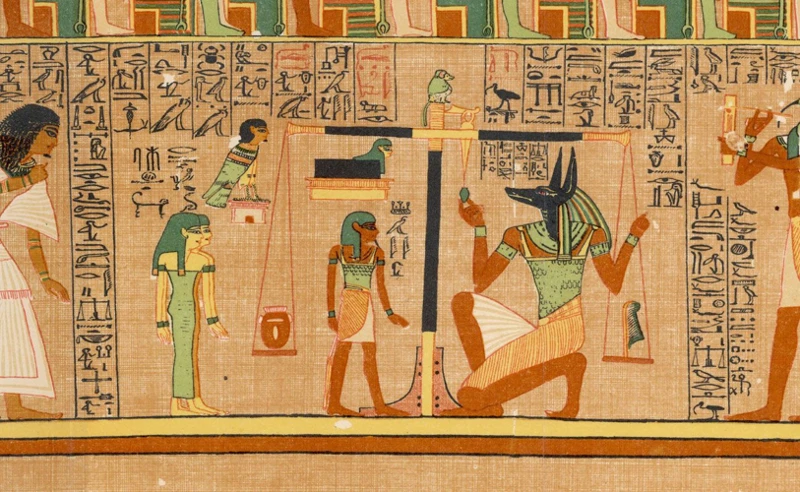
Funerary rites played a crucial role in Roman mythology, as they were believed to guide the soul on its journey to the underworld. The Romans practiced various customs and rituals surrounding death, including both burial and cremation. When a person passed away, their body underwent specific preparations, such as cleansing and anointing. Burial customs varied, with some individuals being laid to rest in elaborate tombs, while others were interred in simple graves. Cremation was also common, with the ashes of the deceased often placed in urns. These rituals were performed with the belief that they would facilitate the soul’s transition into the afterlife. It was believed that the soul needed to cross the River Styx, a treacherous body of water that separated the realm of the living from the realm of the dead. To accomplish this, the deceased required the assistance of Charon, the ferryman of the underworld. Only those who possessed a coin for payment could board Charon’s boat and be ferried across the river. Once in the underworld, the soul would face judgment and be allocated to either Tartarus or Elysium based on their deeds in life. The intricate funerary rites and the soul’s perilous journey illuminate the significance that the Romans attributed to both life and death.
5.1 Burial and Cremation Customs
In Roman mythology, burial and cremation customs played a significant role in the journey of the soul to the afterlife. The Romans believed that proper care of the deceased was essential to ensure a smooth transition to the realm of the dead. Both burial and cremation were practiced, and the choice depended on various factors, including social status and personal preference. Burial customs included elaborate funeral processions and rites. The body of the deceased was typically dressed in fine garments, adorned with jewelry and other valuables, symbolizing their status and wealth in life. It was then placed in a coffin or tomb, accompanied by various offerings such as food, wine, and personal belongings. Familial and community rituals would take place, including prayers, eulogies, and music. The burial site was often a sacred space, and tombstones or monuments were erected to commemorate the deceased. On the other hand, cremation was another common custom in which the body was burned to ashes. This practice was considered to release the spirit from its mortal form swiftly. The ashes were collected and placed in urns, which were then placed in family tombs or buried in the ground. Both burial and cremation customs held deep symbolic meaning for the Romans, honoring the deceased and ensuring a peaceful passage to the afterlife. The customs surrounding the treatment of the deceased reflect the respect and reverence the Romans had for the journey into the realm beyond death’s embrace.
5.2 The Passage to the Underworld
The Passage to the Underworld was a significant aspect of Roman afterlife beliefs, as it represented the journey that souls had to undertake to reach the realm of the dead. According to Roman mythology, the entrance to the Underworld was located near Cape Matapan in Greece, where a mysterious cave known as Avernus served as the gateway. This cave was believed to emit toxic fumes, making it appear as a forbidding and inhospitable entrance. To traverse this treacherous path, the souls required assistance. The custom was to place a coin, known as an obol, in the mouth of the deceased before burial. This coin was payment for Charon, the ferryman, who would transport the souls across the River Styx to the Underworld. The belief was that without the payment, souls would be left stranded and unable to reach their final destination.
Once the souls reached the river’s edge, they would board Charon’s boat, a small and decrepit vessel that would ferry them across the dark waters. On the journey, the souls would encounter eerie sights, such as the souls of the damned who were unable to pay for their passage and were condemned to wander the shores for eternity. The passage itself was filled with a sense of foreboding, as it marked the transition from the realm of the living to the realm of the dead.
The concept of the passage to the Underworld in Roman mythology demonstrated their belief in the existence of a physical and metaphorical journey that the soul had to undertake in order to reach its final destination. The inclusion of Charon and the symbolic payment of the obol underscored the Romans’ understanding of the importance of rituals and offerings in ensuring a successful passage for the departed. It also highlighted their perception of death as a crossing over into another realm, separate from the world of the living. The Passage to the Underworld was an integral part of Roman afterlife beliefs, revealing their keen fascination with the mysteries of the beyond.
Comparisons with Other Afterlife Beliefs
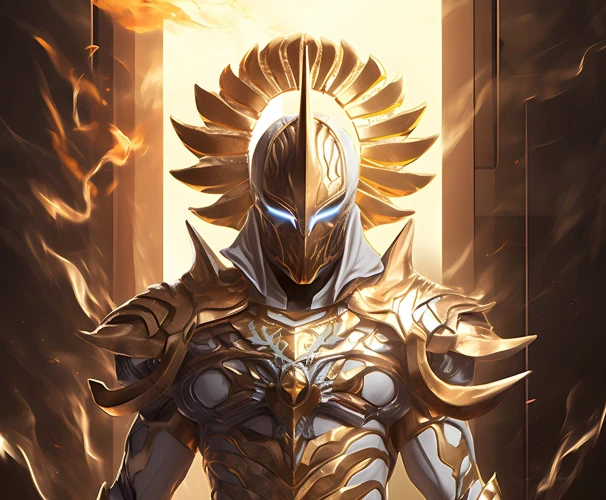
When examining the Roman beliefs about the afterlife, it is intriguing to draw comparisons with other mythological traditions. One such comparison can be made with Egyptian mythology, where the concept of the afterlife revolved around the weighing of the heart. In Egyptian beliefs, the heart of the deceased was weighed against the feather of Ma’at, the goddess of truth, to determine whether the soul would enter the eternal paradise of the Fields of Aaru or face punishment. Another intriguing comparison can be made with Norse mythology, which featured the grand halls of Valhalla for fallen warriors and the realm of Hel for those who did not die in battle. Both Roman and Norse mythology offered distinct destinations for the afterlife, crafted to reflect the unique cultural values and beliefs of their respective societies. The diversity and richness of these afterlife beliefs across different mythologies provide a deeper understanding of humanity’s universal fascination with what lies beyond.
6.1 Egyptian Mythology: The Weighing of the Heart
In Egyptian mythology, the concept of the afterlife was intricately tied to the weighing of the heart. According to their beliefs, when a person died, their heart was placed on a scale and weighed against the feather of Ma’at, the goddess of truth, justice, and cosmic order. This event took place in the Hall of Judgment, where the god Osiris presided as the judge. The outcome of this weighing determined the fate of the soul. If the heart was lighter than the feather, it meant that the individual had lived a virtuous life in accordance with Ma’at’s principles. In this case, the soul would proceed to the blissful realm known as the Field of Reeds, a paradise where they could live eternally. However, if the heart was heavier than the feather, it indicated that the person had led a sinful life, violating Ma’at’s ideals. In such instances, the soul would be devoured by Ammit, a fearsome creature with the head of a crocodile, the body of a lion, and the hindquarters of a hippopotamus. This fate was seen as eternal oblivion, a punishment for those who had failed to uphold Ma’at’s moral standards. The weighing of the heart in Egyptian mythology offers a stark contrast to the Roman afterlife beliefs, where souls were sent to either Tartarus or Elysium based on their deeds in life. The complexity and uniqueness of these different afterlife beliefs highlight the diversity of ancient mythological traditions.
6.2 Norse Mythology: Valhalla and Hel
In Norse mythology, the afterlife is characterized by two distinct realms: Valhalla and Hel. Valhalla is a majestic hall located in Asgard, the realm of the gods. It is reserved for the souls of slain warriors who have shown bravery and honor in battle. These warriors, known as Einherjar, are chosen by the god Odin himself to reside in Valhalla. Inside Valhalla, the Einherjar engage in ceaseless combat during the day and feast in the evening, preparing for the final battle of Ragnarok. This grand destiny awaiting the warriors in Valhalla is considered a reward for their valor.
On the other hand, Hel is a realm associated with the afterlife for those who did not die in battle or were deemed unworthy of Valhalla. Hel is ruled by the goddess Hel, daughter of Loki, and is described as a cold and desolate place. It serves as the resting place for those who have died of illness, old age, or other non-violent causes. Hel is divided into various sections, including Nastrond, a gruesome hall where those guilty of murder, adultery, and other heinous crimes suffer eternal punishment.
The dichotomy between Valhalla and Hel highlights the contrasting fates that await individuals in Norse mythology based on their deeds and manner of death. While Valhalla offers eternal glory and camaraderie, Hel represents a somber afterlife of solitude and punishment. These beliefs in the afterlife reflect the Norse values of bravery, honor, and a warrior’s way of life. The idea of battling eternally in Valhalla and the starkness of Hel’s realm contribute to the rich tapestry of Norse mythology and its unique portrayal of the afterlife.
Conclusion

In conclusion, the beliefs about the afterlife in Roman mythology offer a captivating glimpse into the ancient Roman worldview. The dualistic view of the afterlife, influenced by Greek mythology, demonstrates the intricate connections and borrowings between these two ancient civilizations. The Roman understanding of the afterlife was anchored in the idea of a realm known as the Underworld, ruled by Pluto or Hades. Within this realm, major figures such as Charon, Cerberus, and the Fates held significant roles. Punishments and rewards awaited souls in the depths of Tartarus or the blissful fields of Elysium. Funerary rites played a crucial role in preparing the deceased for their journey to the afterlife, whether through burial or cremation. Comparisons with other ancient mythologies, such as Egyptian mythology with its weighing of the heart, and Norse mythology’s Valhalla and Hel, highlight the diverse and intriguing interpretations of the afterlife in different cultures around the world. The Roman beliefs about the afterlife provide an invaluable insight into the ancient mindset and their views on death and the afterlife. As we explore and reflect on these enchanting tales and customs, we gain a deeper appreciation for the complex tapestry of human beliefs and the eternal quest to understand the great mystery that lies beyond life’s earthly bounds.
Frequently Asked Questions

1. What is the significance of the dualistic view of the afterlife in Roman mythology?
In Roman mythology, the dualistic view of the afterlife separates the souls into two distinct destinations: Tartarus for the wicked and Elysium for the virtuous. This belief reflects the Romans’ understanding of moral judgment and the consequences of one’s actions in life.
2. How did Greek mythology influence Roman beliefs about the afterlife?
Greek mythology had a profound impact on Roman culture, including their beliefs about the afterlife. Roman mythology adopted many elements from Greek mythology, such as the concept of the underworld ruled by Pluto (Hades) and the division of the afterlife into different realms.
3. Who is Pluto in Roman mythology?
Pluto, also known as Hades, is the ruler of the underworld in Roman mythology. He governs over the souls of the dead and presides over the realm of the afterlife. Pluto is often depicted as a powerful and enigmatic figure in Roman mythology.
4. What is the role of Charon in the afterlife?
Charon is a significant figure in the afterlife of Roman mythology. He serves as the ferryman who transports the souls of the deceased across the river Styx to the realm of the dead. Without his guidance, souls cannot enter the underworld.
5. Who is Cerberus and what is its purpose?
Cerberus is a fearsome three-headed dog that guards the entrance to the underworld in Roman mythology. Its purpose is to prevent the living from entering and the dead from escaping. Cerberus symbolizes the boundary between the mortal world and the realm of the afterlife.
6. What are the Fates in Roman mythology?
The Fates, often referred to as the “Spinners of Destiny,” are three divine sisters who control the destiny of mortals in Roman mythology. They determine the length of a person’s life and the events that befall them. The Fates play a crucial role in shaping the afterlife.
7. What is Tartarus in Roman mythology?
Tartarus is the deepest abyss within the underworld, where the most wicked souls are punished for eternity. It is a place of torment and suffering, reserved for those who committed heinous crimes and defied the gods. The concept of Tartarus serves as a deterrent against immoral actions.
8. What is Elysium in Roman mythology?
Elysium is a blissful and idyllic realm in the underworld that serves as a reward for those who lived virtuous lives. It is a place of eternal happiness and tranquility, where the souls of the righteous find peace and serenity. Elysium represents the ultimate paradise in the afterlife.
9. What are the funerary rites associated with the Roman afterlife?
In Roman culture, funerary rites played a significant role in ensuring a smooth passage for the soul to the afterlife. These rites included burial or cremation customs, accompanied by rituals, prayers, and offerings to honor and appease the deceased. They believed these practices would facilitate the soul’s journey to the underworld.
10. How do Roman afterlife beliefs compare with other mythological traditions?
Roman afterlife beliefs share similarities and differences with other mythological traditions. Egyptian mythology, for example, focuses on the weighing of the heart to determine one’s fate in the afterlife, while Norse mythology presents contrasting realms of Valhalla for the brave and Hel for the dishonorable. These comparisons showcase the diversity of afterlife beliefs across cultures.
References
- Did the ancient Romans believe in an afterlife?
- Life after Death: the Afterlife in Greco-Roman Antiquity
Frequently Asked Questions

1. What did the ancient Romans believe happened to the soul after death?
The ancient Romans believed that after death, the soul would journey to the Underworld, where it would be judged and assigned to a specific realm based on its actions in life.
2. How did the Romans view the afterlife compared to other ancient civilizations?
The Romans had a unique view of the afterlife, combining elements of both a dualistic belief system and the influence of Greek mythology. This set their afterlife beliefs apart from those of other ancient civilizations.
3. Who ruled the Underworld in Roman mythology?
The Underworld in Roman mythology was ruled by Pluto, also known as Hades. He was the god of the Underworld and the judge of the souls.
4. What was the role of Charon in the Underworld?
Charon was the ferryman who transported the souls of the deceased across the River Styx to the realm of the dead. He required a coin to serve as payment for his services.
5. Who was Cerberus and what was his role in the Underworld?
Cerberus was a fearsome three-headed dog who guarded the gates of the Underworld. His role was to prevent the living from entering and the dead from escaping.
6. What were the punishment and rewards in the Underworld?
In the Underworld, the wicked were condemned to Tartarus, the deepest abyss, where they suffered eternal torment. The virtuous were rewarded with a place in Elysium, the blissful fields of the afterlife.
7. What were the funerary rites and customs in ancient Rome?
Ancient Romans practiced various funerary rites and customs, including both burial and cremation. They believed that proper burial or cremation was essential for the soul’s journey to the Underworld.
8. How did the soul make its journey to the Underworld?
The soul made its journey to the Underworld by crossing the River Styx on the ferry of Charon. To ensure a safe passage, the soul needed to be buried or cremated according to the customs and rituals of the time.
9. How does Roman mythology compare to Egyptian mythology in terms of the afterlife?
While both Roman and Egyptian mythology featured an afterlife, they differed in their beliefs. The Romans focused on judgment and punishment as well as rewards, while the Egyptians emphasized the weighing of the heart and the judgment by Osiris.
10. What are the similarities and differences between Roman and Norse mythology regarding the afterlife?
In Roman mythology, the afterlife was divided into specific realms based on one’s actions in life, while Norse mythology featured Valhalla, a hall of heroes, and Hel, a realm of the dead. Both mythologies also encompassed aspects of judgment and punishment.

